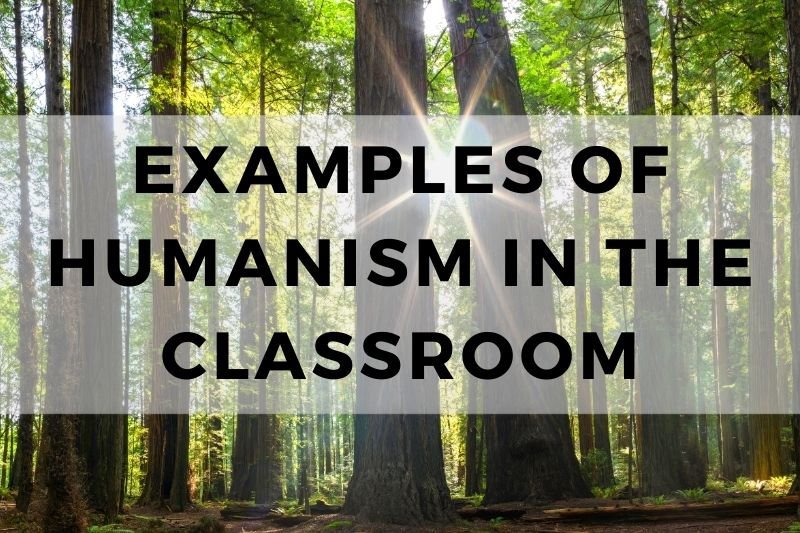
Humanism in education focuses on the whole student—emotionally, socially, and intellectually. It emphasizes respect, empathy, and active engagement. Teachers create environments where students feel valued and empowered. Humanism encourages personal growth, critical thinking, and creativity.
In the classroom, it’s about more than just academics; it’s about developing responsible, independent thinkers. This approach tailors learning to individual needs and fosters a sense of belonging. In this article, we will explore practical examples of humanism in the classroom, highlighting methods that can be implemented to support students in meaningful ways.
10 Practical Examples of Humanism in the Classroom
#1. Encouraging Student-Centered Learning and Active Participation
Humanism values the voice of the student. In a student-centered classroom, teachers act as facilitators, not just instructors. They encourage students to take charge of their learning. This approach allows students to ask questions, share ideas, and explore topics that interest them. Active participation keeps students engaged and invested in their education. They learn better when they feel in control and involved in the process.
#2. Fostering an Environment of Empathy, Respect, and Open Communication
Humanism in education relies on building trust and respect. Teachers create a safe space where students feel comfortable expressing themselves. Open communication helps resolve conflicts and fosters understanding. When students know their voices matter, they develop confidence and emotional intelligence. Empathy also plays a key role. Teachers model kindness and encourage students to support each other.
#3. Supporting Emotional and Social Development Alongside Academic Growth
In a humanistic classroom, emotional and social growth are just as important as academic achievements. Teachers recognize that students bring their emotions and experiences with them into the classroom. By addressing emotional well-being, teachers help students manage stress and build resilience. Social skills, such as collaboration and conflict resolution, are also nurtured. This holistic approach creates well-rounded individuals prepared for life beyond school.
#4. Encouraging Critical Thinking and Problem-Solving Skills
Critical thinking is at the core of humanism. Students are encouraged to question ideas, analyze information, and think independently. Teachers guide students through problem-solving exercises, helping them approach challenges with creativity and logic. This approach builds skills that extend beyond the classroom and prepare students for real-world problems. By valuing thoughtfulness, teachers empower students to be active participants in their learning journey.
#5. Providing Opportunities for Self-Expression and Creativity
Humanism supports the idea that every student has unique talents and ways of thinking. Classrooms that promote creativity provide a platform for self-expression. Art, writing, and other creative outlets allow students to communicate their ideas and emotions. Encouraging creativity helps students develop confidence in their abilities and gives them a sense of accomplishment. It also fosters an environment where new ideas are valued and explored.
#6. Tailoring Teaching to Individual Learning Styles and Needs
Each student learns differently. Humanism encourages teachers to recognize these differences. Some students may learn best through hands-on activities, while others excel with visual aids or written instruction. Tailoring teaching methods to fit individual needs helps all students succeed. This approach allows for flexibility in the classroom. It acknowledges that students have unique strengths, weaknesses, and learning preferences. By adjusting lesson plans and activities, teachers can ensure that every student receives the support they need to thrive.
#7. Promoting Collaboration and Peer Learning
Humanism values community and cooperation. In the classroom, this translates to promoting teamwork and peer learning. Collaborative activities encourage students to work together, share ideas, and solve problems. Peer learning allows students to teach and learn from each other. This not only enhances understanding but also builds interpersonal skills. When students collaborate, they learn to appreciate diverse perspectives and strengthen their problem-solving abilities. Teachers create opportunities for group work, discussions, and projects to foster a cooperative environment.
#8. Encouraging Self-Reflection and Goal Setting
Self-reflection is a key component of humanism. It helps students evaluate their strengths and areas for improvement. Teachers encourage students to reflect on their learning progress regularly. This can be done through journaling, discussions, or self-assessment tools. Setting personal goals is another important aspect. When students set goals, they take ownership of their learning. They become motivated to achieve their objectives and track their progress. Self-reflection and goal setting build self-awareness, responsibility, and a sense of purpose.
#9. Creating a Safe and Inclusive Space for All Students
A humanistic classroom values diversity and inclusivity. It’s essential that all students feel safe, respected, and accepted. Teachers ensure that every student is treated equally, regardless of background, ability, or identity. This includes promoting cultural sensitivity, addressing biases, and providing accommodations for students with special needs. By creating a welcoming environment, teachers encourage all students to participate and express themselves freely. Inclusivity allows students to see their worth and fosters a sense of belonging.
#10. Integrating Life Skills and Values Education into the Curriculum
Humanism recognizes that education extends beyond academics. Life skills such as time management, communication, and decision-making are crucial for personal development. Teachers integrate these skills into daily lessons. Students are also taught essential values like integrity, responsibility, and respect for others. These skills and values prepare students for challenges in life, both in and outside the classroom. By blending life skills with academic content, humanistic teaching helps students grow into well-rounded individuals ready for the future.
Closing Thoughts
Humanism in the classroom offers a holistic approach to education. By focusing on the emotional, social, and academic development of students, it creates an environment where learners feel valued and empowered. The practical examples discussed here highlight the importance of individualized support, collaboration, and self-expression.
Teachers who embrace humanistic principles help students grow into confident, critical thinkers prepared for life’s challenges. This approach doesn’t just shape academic success; it shapes character, resilience, and a sense of belonging. In the end, humanism ensures that education is not just about knowledge, but about developing the whole person.
